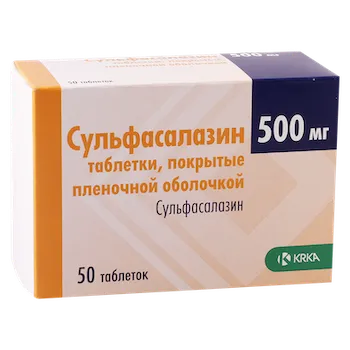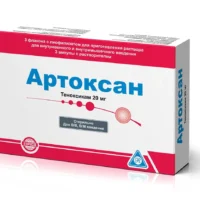Description
Sulfasalazin (Sulfasalazine) Coated Tablets 500 mg. №50
Ingredients
- Each coated tablet contains 500 mg of Sulfasalazine.
Dosage
- The usual adult dose is 2 to 4 tablets daily, taken in divided doses.
Indications
- Sulfasalazine is indicated for the treatment of inflammatory bowel disease (ulcerative colitis, Crohn’s disease) and rheumatoid arthritis.
Contraindications
- Do not use Sulfasalazine if you are allergic to sulfa drugs or salicylates.
Directions
- Take Sulfasalazine exactly as prescribed by your healthcare provider. Swallow the tablets whole with a full glass of water.
Scientific Evidence
Sulfasalazine works by reducing inflammation in the body. It is a combination of sulfapyridine and 5-aminosalicylic acid, which are thought to have anti-inflammatory effects in the colon. Studies have shown that Sulfasalazine is effective in inducing and maintaining remission in patients with ulcerative colitis and Crohn’s disease.
Additional Information
- It is important to monitor blood counts regularly while taking Sulfasalazine, as it can affect the bone marrow.
- This medication may also cause yellow-orange discoloration of the urine. Consult your doctor if you experience any side effects.
- Research has indicated that Sulfasalazine may also have immunosuppressive properties, making it beneficial in the treatment of autoimmune conditions like rheumatoid arthritis.
- Clinical trials have shown that Sulfasalazine can help reduce joint pain and swelling in patients with rheumatoid arthritis.





